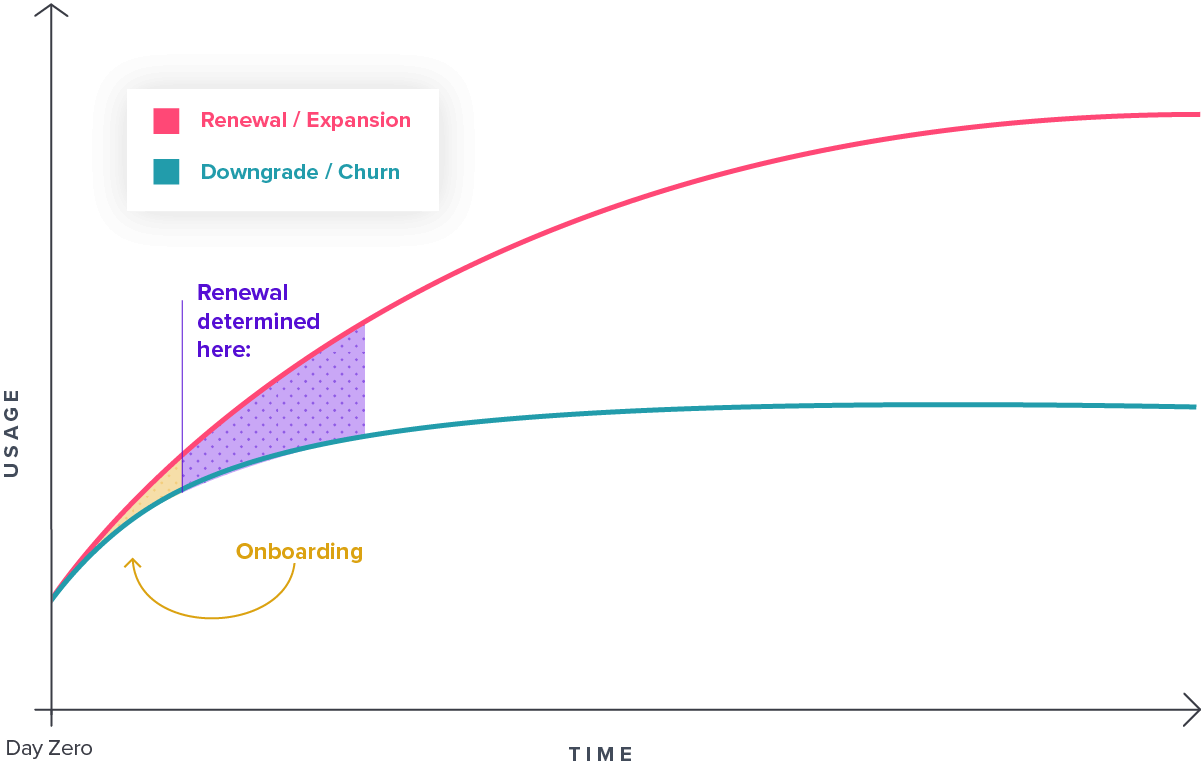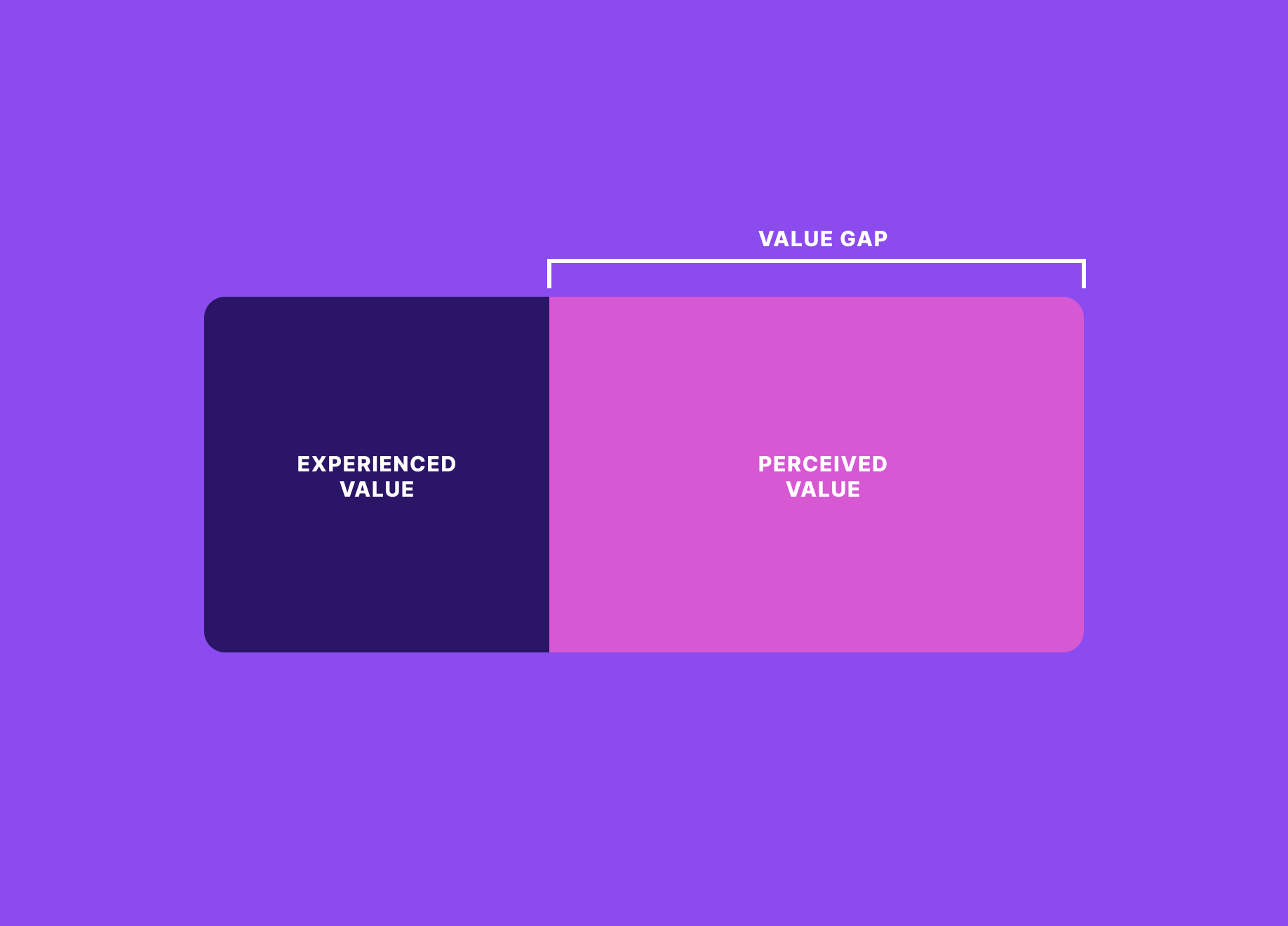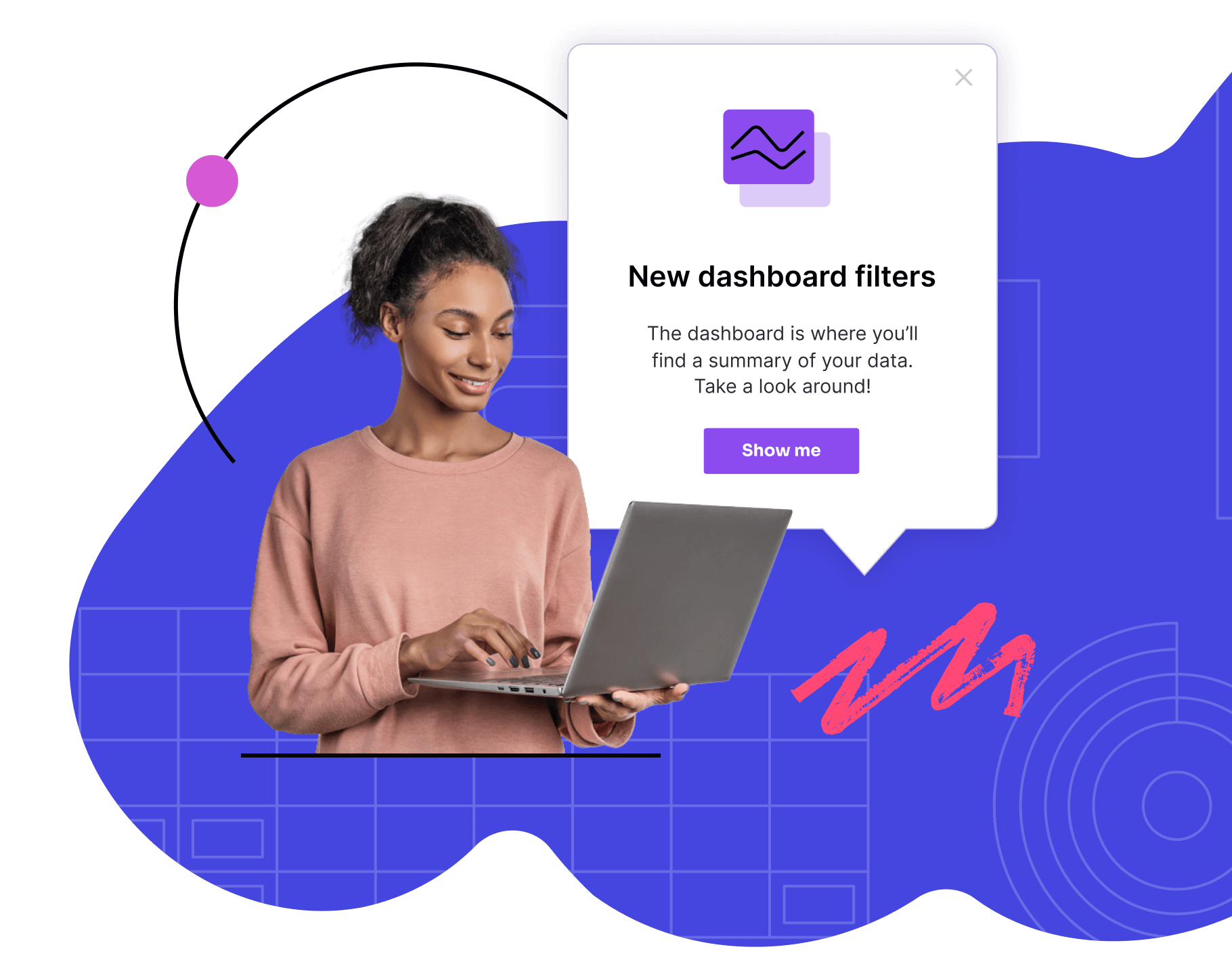Table of Contents
What is the value gap?
The value gap occurs when the perceived value and experienced value for a software product don’t overlap, creating a “gap” between the user’s expectations and reality. In Pendo’s product benchmarks report, researchers found that only 30% of users exhibit regular usage in the first 90 days of using a new product, which suggests that most users are not experiencing the value they anticipated at purchase. Often the problem isn’t that new users are incapable or the product is insufficient, but rather that there is an educational barrier preventing customers from discovering value in the app.
Why does the value gap matter?
If new users can’t easily find value in a product, they are likely to abandon using it altogether, especially since the rise of SaaS applications has made switching costs extremely low. Companies need to remember that customer churn doesn’t happen when the contract ends—it happens when users no longer find your product useful or valuable.

How can I minimize my product’s value gap?
In order to close (or prevent) the value gap, companies need to implement an effective onboarding experience so that new users learn and find value in the product as quickly as possible. Although there are many ways to administer onboarding, many companies are turning to an in-app approach. With in-app onboarding, companies are able to provide contextual information to new users as they navigate the product, and help them utilize the functionality that’s most relevant to them.
Citrix, for example, used product analytics to identify a certain trial usage pattern that converted to paying customers at a higher rate than others. The team then created an in-app onboarding flow that steered trial users toward those particular features, and was able to increase their trial conversion rate by 28 percent.
Here are some best practices for building an effective in-app onboarding strategy:
- Keep it simple: try to make your onboarding flow as simple as possible—the last thing you want is users to already feel confused about how to use your product when they first log in.
- Plan for different learning styles: since everyone learns differently, consider multiple formats (videos, illustrated walkthroughs, etc.) and ways for users to progress through onboarding (e.g. letting them explore topics in their preferred order).
- Personalize whenever possible: your product likely serves multiple types of users, so it’s important to tailor in-app onboarding to different user segments and their specific needs and workflows required to drive success.
- Designate ownership: make sure you establish clear ownership over onboarding (whether it’s a dedicated onboarding role, or a member of product or customer success), and include the right stakeholders in the planning and execution processes.
You might also like




